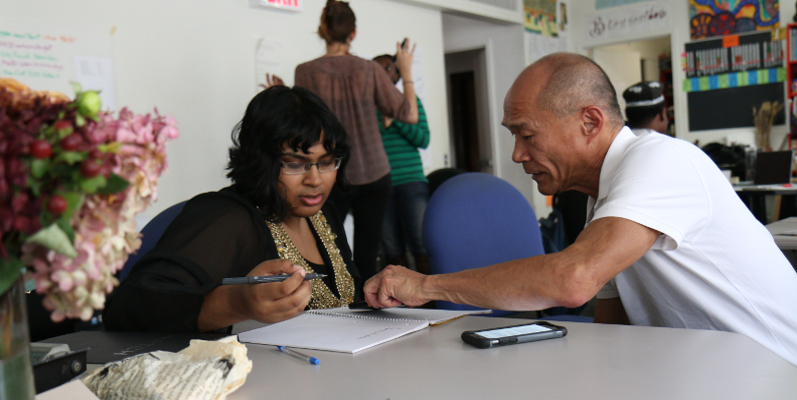What our global community has experienced since the new year began, is unprecedented.
Three months ago, no one knew that SARS-CoV-2 existed. Now the virus has spread to almost every country, infecting at least 446,000 people whom we know about, and many more whom we do not. It has crashed economies and broken health-care systems, filled hospitals and emptied public spaces. It has separated people from their workplaces and their friends. A global pandemic of this scale was inevitable. In recent years, hundreds of health experts have written books, white papers, and op-eds warning of the possibility. Bill Gates has been telling anyone who would listen, including the 18 million viewers of his TED Talk. In 2018, I wrote a story for The Atlantic arguing that America was not ready for the pandemic that would eventually come. In October, the Johns Hopkins Center for Health Security war-gamed what might happen if a new coronavirus swept the globe. And then one did. Hypotheticals became reality. “What if?” became “Now what?” —Ed Yong (2020)
Cities and states directed individuals to stay at home, to shelter in place. All this in an effort to force people to keep distance from others and slow the spread of COVID-19.
School districts jumped into action. I talked to several of my colleagues who work in the central administration office for their local public school system. Many of those I talked to that first week didn’t sleep much. They were too busy scrambling to find ways to continue the learning for their students. “Business as usual”, if you will.
There’s a problem with that idea of “business as usual”. Nothing about what we’re currently experiencing is usual. Or normal. Or regular.
Forward thinking districts invested money years ago on getting every student a device. Other local school systems have vowed they “will never be 1:1”. (Just last week, I heard it again from the technology director of in a nearby district.) How’s that working for your kids right about now?
Another local district has spent much of their remaining funds for the year in purchasing hot spots so that students living in week-to-week hotels and “dead spots” can at least access information from smartphones. Other schools systems have reached out to students without devices and/or wifi to meet in a location where students can pick up food AND worksheet packets. (Lord, help us.)
It’s time for disruption.
Administrators, principals, teachers, families, caregivers and students are beyond stressed. That is indicator #1 that we need to slow down for a minute and take a hard look at how learning is going to be different–must be different during this pandemic.
Four Not-So-Easy Steps for Disrupting Education:
- Identify the Problematic Bits for all Stakeholders–the first week would have been the optimal time to reach out to families and caregivers to gather information. Who lives in the home? What are the adult work schedules currently? Are the technology devices in the home available to students during “school” hours? What’s the wifi situation in your home? Can you share possible challenges to your kids’ learning at home? What else do we need to know that might help or hinder learning for your kids in the coming weeks?
- Look Beyond the Traditional Education Models–learning from home was never going to be able to look like it does in classrooms across our country. From the start we have to think about all the possible roadblocks for learning. What about our students that require scaffolding and additional supports in order to learn? How does that look with distance learning? Is it really a viable plan to think that teachers can adequately teach new concepts or should the focus be on strengthening what kids have already learned?
- Combine Feedback, Technology, Processes and Resources to Design Imperative Solutions–leadership teams composed of classroom teachers, specialists, department coordinators, family members and students should be invited to review feedback from families and caregivers. That information, along with the resources available (current and newly-acquired during the pandemic), could have been the basis for a plan that would have, at the very least, included the recommendations of all those involved in the learning-at-home.
- Leverage the Power of a Shared Vision With All Partners–a big part of the early conversations should have been around realistic expectations for learning while sheltering in place. There are educators, in central administration positions with large families that will tell you if has been hellish trying to keep up with assignments, log-ins, deadlines, teacher communications (teachers are being stretched to their absolute limits), clarity of new concepts and unrealistic assignments for their kids with learning disabilities. One educator/parent said to me, “If I can’t figure this out, and it’s my profession for the last 2 decades, how in the world are other non-educator families coping?” They’re not. Once a plan is designed with input from ALL partners, can you imagine how much easier it would be to use the power of that shared vision?
Nothing is going to be perfect because there are no precedents. We have no one to call or email who can give us easy answers for how to go to a distance learning plan with a week of preparation to pull it off. What we can do is start the conversation now. Something has to change, however, families who are caught without the technology and internet access are in an unacceptable position. There’s been an equity issue for years. People in the know have brought it to our attention again and again. Kelly Wickham Hurst is one of many who have been tirelessly doing this work. Follow her on all the social media.

Leaders can gather people representative of all stakeholders in the learning from home “cadre”. They can ask hard questions. They can listen and learn. They can address the inequity. All members in the learning from home clan can work together to determine what is absolutely essential in the coming weeks so kids can remain emotionally healthy, connected to their learning community, reading, writing, calculating, solving, thinking, hypothesizing in authentic ways that are accessible to EVERY student–not just those with high speed internet and top shelf technology.
It’s not easy. I said it from the start, but this COVID-19 pandemic has hit us with the stark truth and we cannot waste this opportunity.
Let’s do this. #disrupteducation
Yong, Ed. “How The Pandemic Will End”. The Atlantic, 2020, https://www.theatlantic.com/health/archive/2020/03/how-will-coronavirus-end/608719/.










